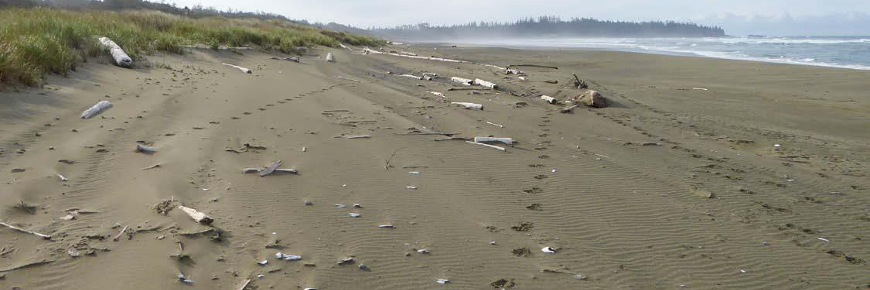
Wild about wolves
Helping humans and wildlife coexist in and around Pacific Rim National Park Reserve
What’s the issue?

In the 1990s, wolves began to recolonize the west coast of Vancouver Island, where Pacific Rim National Park Reserve is located. This was a positive development for the Nuu-chah-nulth peoples, whose traditional territories include this area and who consider wolves a sacred animal. However, because wolves had been absent since the 1960s, they returned to a significantly changed environment. Now, wolves are sharing spaces such as beaches and trails with humans more frequently – and, problematically, some humans seek out close interactions with the wolves. These factors have created the conditions for conflict between wolves, humans and other wildlife. Recently, some local wolves have lost their natural wariness of people. Others have learned to associate people with food. Domestic dogs, particularly when off leash, have contributed to the conflict. Dogs tend to attract wolves because wolves can perceive them as prey or as an invading canine from another territory.
What’s our approach?
- Collaborate with Indigenous partners, neighbouring jurisdictions and stakeholders to develop and implement a common vision for human-wildlife coexistence in this region.
- Develop new understanding of human perspectives and the behaviour of visitors and residents; use this information to build a campaign for changing awareness and behaviour, improving compliance with regulations and reducing conflict with wolves and other wildlife.
- Measure results using before-and-after comparisons of human awareness, behaviour and frequency of conflict with wolves and other wildlife.
- Improve ecological understanding of coastal wolves, their behaviour and habitat use; use the information to promote healthy, wary wolf and human behaviour choices, reduce unnatural food opportunities, and prevent conflicts with people.
What’s been accomplished?
- Convened a Nuu-chah-nulth First Nations elders group to provide Indigenous perspectives on wolves and coexistence.
- Established a regional working group for wildlife coexistence to share, coordinate and implement a common vision for the coexistence of people, wolves and other wildlife.
- Piloted field methods to study wolves; collected their DNA (non-invasively, from hair) to identify individual wolves and kinship, and to estimate home ranges and population sizes.
- Developed new wildlife messages for the public – to be used in new signage and communication materials – that explain best practices for keeping wildlife safe and wild; informed Canadians with the help of media coverage.
Related links
- Igniting restoration
- Two pines in decline
- Conserving an alpine enigma
- Rescue the fescue
- Historic homecoming
- Wildlife crossings
- Going with the flow
- Propagating success
- Listening to the sea, looking to the future
- Ecosystem on the edge
- Keeping dunes dynamic
- Restoring kelp in Gwaii Haanas National Marine Conservation...
- Llgaay gwii sdiihlda, or restoring balance
- Date modified :